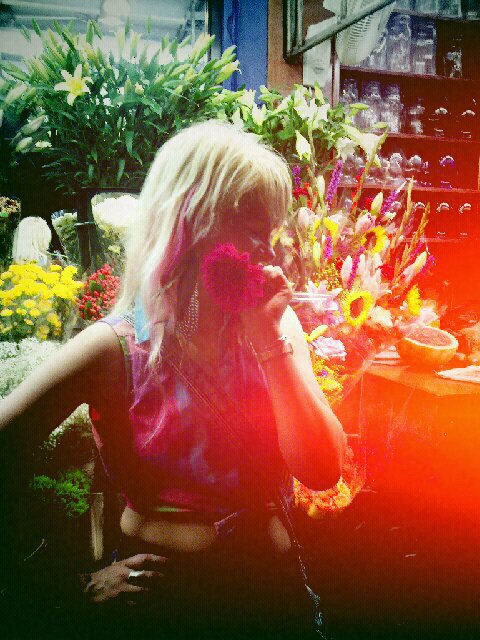I was born in Illinois in 1983 and I still live and play there today.
Despite always having had the urge to grab a crayon or a camera, I'm something of an artistic recluse.
It has taken some time for me to get used to the idea of sharing my work.
As my voice has grown stronger with many things to say,
I have found the prospect of sharing experiences through art quite advantageous.
Incidentally,
many of the conversations in my own work are about art itself.
What does art mean to me?
What purpose does it serve in my life and in the lives of other folks?
What are the "boundaries" and
what are the "limits" of the art experience?
Deconstruction
is a major part of my thought process in and out of the studio.
Academically,
I am pursing a study of art theory and criticism and
I reward myself by writing about the problems
and
triumphs occurring in the art universe today as well as in the past—
I thoroughly enjoy taking contemporary ideas into the past and considering things in new ways.
In my writing
I use theoretical frameworks to negotiate
a more lucid and dynamic understanding of culture
and
how culture interacts with the visuality that permeates there.
A major strand throughout much of my work,
beyond the broader inquirers into what art means socially,
is the notion of object:
object ownership,
objectification of history,
objectification of people,
objectification of artwork
and
its many mediums; etc.
I often explore/exploit the idea of objecthood:
how we decorate our lives with arbitrary, as well as meaningful, things;
how we objectify the ones we love and the strangers we see;
how we objectify pain and death;
how we objectify complex and sensitive cultural histories.
My artwork is also,at its core,
an experiment in composition, color, and form.
Through a variety of mixed media I have chosen as my inspiration a color palette that is
at times complimentary and at other times destructively contradictory.
The literal destruction of an object is secondary to the overall effect created by color (dis)harmony and the overall aesthetic of the reclaimed and reinvented object/experience.
I openly play with the allure of foreign and aggressive new colors and forms into otherwise familiar and traditional settings.
Barriers and obstacles are thereby created between the viewer and the object through which
one must negotiate an understanding of what is both present and hidden.
My readymade works frequently deal with the re-contextualization of decorative art objects.
By retooling the object and then re-presenting it before the viewer I intend to add new layers to the conversation of the original object.
By reclaiming these objects I mean to acknowledge how our possessions (can) (do) define us.
In so many innumerable ways the bric-a-brac of our lives becomes a unit of measure of our own worth.
I enjoy infiltrating this territory of being
and
I revel in pointing to the superficial and the deeply intrinsic character traits in all of us.
—the artist, February 2011
 "Nothing is original. Steal from anywhere that resonates with inspiration or fuels your imagination. Devour old films, new films, music, books, paintings, photographs, poems, dreams, random conversations, architecture, bridges, street signs, trees, clouds, bodies of water, light and shadows. Select only things to steal from that speak directly to your soul. If you do this, your work (and theft) will be authentic. Authenticity is invaluable; originality is nonexistent. And don't bother concealing your thievery - celebrate it if you feel like it. In any case, always remember what Jean-Luc Godard said: "It's not where you take things from - it's where you take them to."
"Nothing is original. Steal from anywhere that resonates with inspiration or fuels your imagination. Devour old films, new films, music, books, paintings, photographs, poems, dreams, random conversations, architecture, bridges, street signs, trees, clouds, bodies of water, light and shadows. Select only things to steal from that speak directly to your soul. If you do this, your work (and theft) will be authentic. Authenticity is invaluable; originality is nonexistent. And don't bother concealing your thievery - celebrate it if you feel like it. In any case, always remember what Jean-Luc Godard said: "It's not where you take things from - it's where you take them to."







































